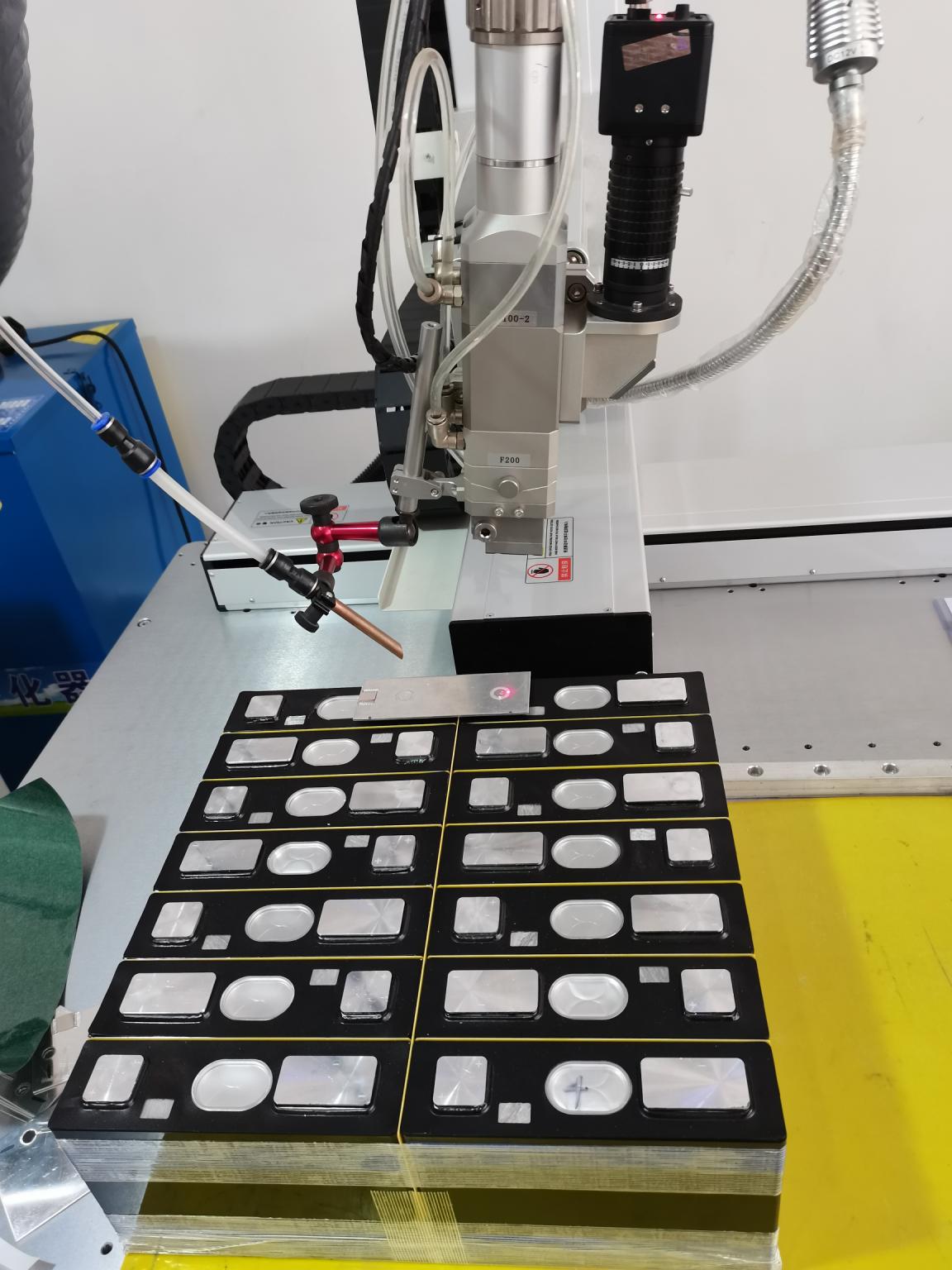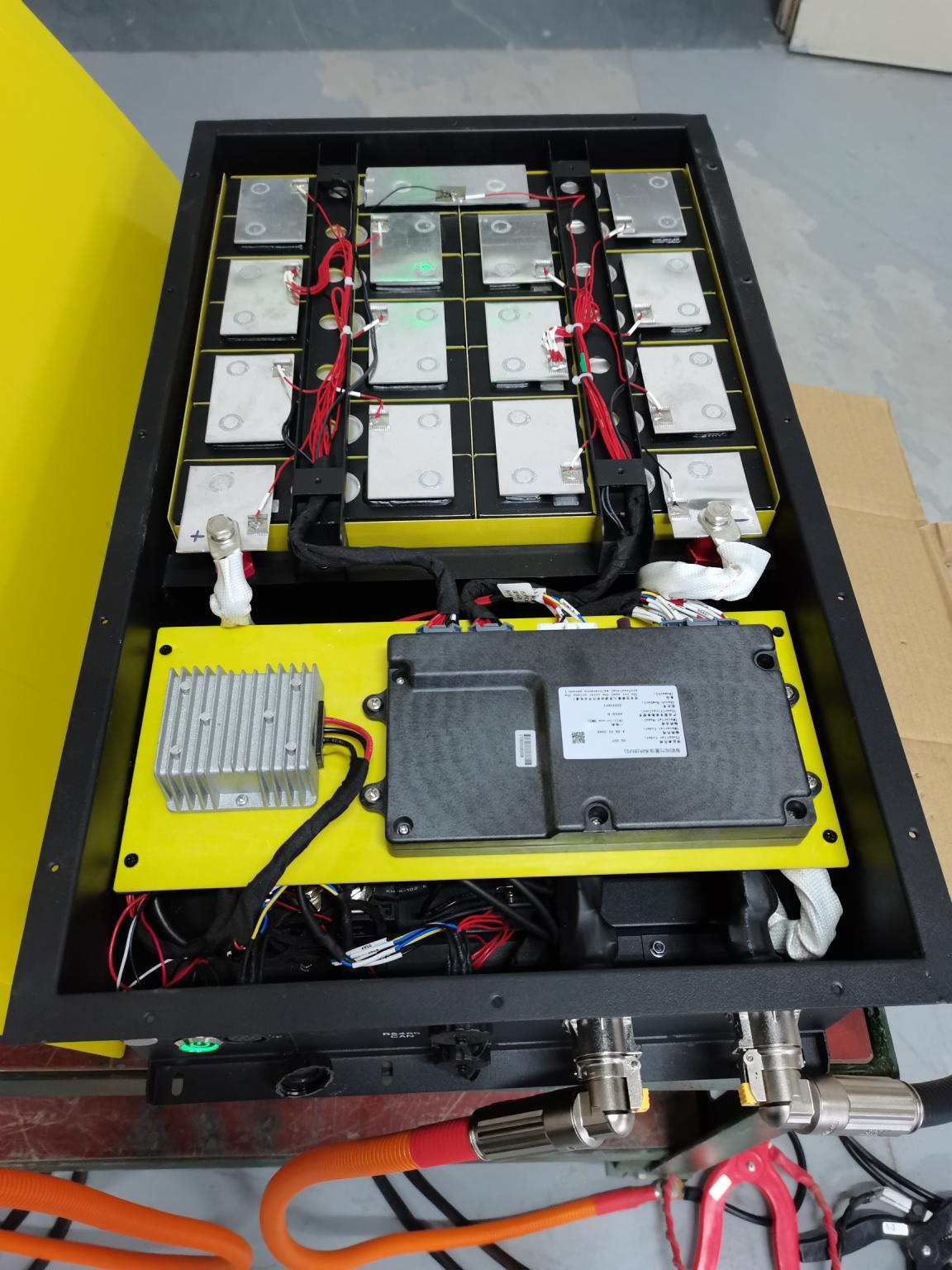- 12
- 11月
影响锂离子电池内阻的因素
With the use of lithium batteries, battery performance continues to decay, mainly as capacity decay, internal resistance increase, power drop, etc. The change of battery internal resistance is affected by various usage conditions such as temperature and discharge depth. Therefore, the factors that affect the internal resistance of the battery are described in terms of battery structure design, raw material performance, manufacturing process and use conditions.

电阻是锂电池在工作时电流在电池内部流动时所受到的电阻。 一般锂电池的内阻分为欧姆内阻和极化内阻。 欧姆内阻由电极材料、电解液、隔膜电阻和各部分的接触电阻组成。 极化内阻是指电化学反应过程中极化引起的电阻,包括电化学极化内阻和浓差极化内阻。 电池的欧姆内阻由电池的总电导率决定,电池的极化内阻由锂离子在电极活性物质中的固相扩散系数决定。

欧姆电阻
欧姆电阻主要分为三部分,一是离子阻抗,二是电子阻抗,三是接触阻抗。 我们希望锂电池的内阻越小越好,所以需要针对这三项采取具体的措施来降低欧姆内阻。
离子阻抗
Lithium battery ion resistance refers to the resistance to the transmission of lithium ions inside the battery. In a lithium battery, the lithium ion migration speed and the electron conduction speed play an equally important role, and the ion resistance is mainly affected by the positive and negative electrode materials, the separator, and the electrolyte. To reduce ion impedance, you need to do the following:
确保正负极材料和电解液具有良好的润湿性
在设计极片时需要选择合适的压实密度。 如果压实密度过大,电解液不易渗入,会增加离子电阻。 对于负极片,如果第一次充放电时在活性物质表面形成的SEI膜太厚,也会增加离子电阻。 这时候就需要调整电池的化成工艺来解决。
电解质的影响
电解液必须具有合适的浓度、粘度和电导率。 当电解液粘度过高时,不利于电解液与正负极活性物质之间的渗透。 同时,电解液也需要低浓度,过高的浓度也不利于其流动和渗透。 电解液的电导率是影响离子电阻的最重要因素,它决定了离子的迁移。
隔膜对离子电阻的影响
The main influencing factors of the diaphragm on the ion resistance are: electrolyte distribution in the diaphragm, diaphragm area, thickness, pore size, porosity, and tortuosity coefficient. For ceramic diaphragms, it is also necessary to prevent ceramic particles from blocking the pores of the diaphragm, which is not conducive to the passage of ions. While ensuring that the electrolyte is fully infiltrated into the diaphragm, there should be no excess electrolyte remaining in it, which reduces the efficiency of the electrolyte.
电子阻抗
电子阻抗的影响因素很多,可以从材料、工艺等方面加以改进。
Positive and negative plates
The main factors affecting the electronic impedance of the positive and negative plates are: the contact between the active material and the current collector, the factors of the active material itself, and the parameters of the plate. The active material should be in full contact with the current collector surface, which can be considered from the current collector copper foil, aluminum foil base material, and the adhesion of the positive and negative electrode pastes. The porosity of the living material itself, the by-products on the surface of the particles, and the uneven mixing with the conductive agent, etc., will cause the electronic impedance to change. Polar plate parameters such as the density of living matter is too small, the gap between the particles is too large, which is not conducive to electron conduction.
隔膜
影响隔膜电子阻抗的主要因素有:隔膜厚度、孔隙率和充放电过程中的副产物。 前两个很容易理解。 电池拆开后,隔膜上经常会发现一层厚厚的棕色物质,包括石墨负极及其反应副产物,会堵塞隔膜孔隙,降低电池的使用寿命。
集电基板
The material, thickness, width of the current collector and the degree of contact with the tabs all affect the electronic impedance. The current collector needs to choose a substrate that has not been oxidized and passivated, otherwise it will affect the impedance. Poor welding between copper and aluminum foil and tabs will also affect electronic impedance.
接触电阻
接触电阻是在铜铝箔与活性物质的接触点之间形成的,需要注意正负极浆料的附着力。
极化内阻
当电流通过电极时,电极电位偏离平衡电极电位的现象称为电极极化。 极化包括欧姆极化、电化学极化和浓差极化。 极化电阻是指电池正负极在电化学反应过程中极化引起的内阻。 可以反映电池内部的一致性,但受操作和方法的影响,不适合生产。 内极化电阻不是常数,在充放电过程中随时间变化。 这是因为活性物质的成分、电解液的浓度和温度都在不断变化。 欧姆内阻服从欧姆定律,极化内阻随着电流密度的增加而增加,但不是线性关系。 它通常随着电流密度的对数增加而线性增加。
结构设计影响
在电池结构设计中,除了电池结构本身的铆焊和焊接外,电池极耳的数量、尺寸和位置直接影响电池的内阻。 在一定程度上,增加极耳的数量可以有效降低电池的内阻。 极耳的位置也会影响电池的内阻。 极片位置在正负极片头部的绕线式电池的内阻最大。 与绕线电池相比,叠片电池相当于几十个小电池并联。 ,其内阻较小。
原材料性能影响
Positive and negative active materials
在锂电池中,正极材料是储锂面,更决定了锂电池的性能。 正极材料主要通过包覆和掺杂来提高粒子间的电子导电性。 例如,Ni的掺杂增强了PO键的强度,稳定了LiFePO4/C的结构,优化了电池体积,可以有效降低正极材料的电荷转移电阻。 活化极化的显着增加,尤其是负极的活化极化,是极化严重的主要原因。 减小负极的粒径可以有效降低负极的活性极化。 当负极固相粒径减小一半时,活性极化可降低45%。 因此,在电池设计方面,研究正负极材料本身的改进也是必不可少的。
导电剂
石墨和炭黑因其良好的性能而被广泛应用于锂电池领域。 与石墨基导电剂相比,使用炭黑基导电剂的正极具有更好的电池倍率性能,因为石墨基导电剂的颗粒形貌呈片状,导致孔隙曲率大倍率大幅增加,且Li液相扩散过程中容易发生限制放电容量的现象。 添加碳纳米管的电池内阻较低,因为与石墨/炭黑与活性物质的点接触相比,纤维状碳纳米管与活性物质呈线接触,可以降低电池的界面阻抗。
集电器
降低集流体与活性材料的界面电阻,提高两者结合强度,是提高锂电池性能的重要手段。 在铝箔表面涂上一层导电碳涂层并在铝箔上进行电晕处理,可以有效降低电池的界面阻抗。 与普通铝箔相比,使用覆碳铝箔可使电池内阻降低65%左右,并可减少电池在使用过程中内阻的增加。 经电晕处理的铝箔交流内阻可降低20%左右。 在常用的20%~90%SOC范围内,整体直流内阻比较小,随着放电深度的增加,增加量逐渐变小。
隔膜
The ion conduction inside the battery depends on the diffusion of Li ions in the electrolyte through the porous diaphragm. The liquid absorption and wetting ability of the diaphragm is the key to forming a good ion flow channel. When the diaphragm has a higher liquid absorption rate and porous structure, it can be improved. Conductivity reduces battery impedance and improves battery rate performance. Compared with ordinary base membranes, ceramic diaphragms and rubber-coated diaphragms can not only greatly improve the high temperature shrinkage resistance of the diaphragm, but also enhance the liquid absorption and wetting ability of the diaphragm. The addition of SiO2 ceramic coating on the PP diaphragm can make the diaphragm absorb liquid The volume increased by 17%. Coating 1μm PVDF-HFP on the PP/PE composite diaphragm, the liquid absorption rate of the diaphragm is increased from 70% to 82%, and the internal resistance of the cell is reduced by more than 20%.
从制造工艺和使用条件来看,影响电池内阻的因素主要有:
工艺因素影响
制浆
混合时浆料分散的均匀性影响导电剂能否均匀分散在与其紧密接触的活性物质中,与电池的内阻有关。 通过增加高速分散,可以提高浆料分散的均匀性,电池内阻会更小。 通过添加表面活性剂,可以提高导电剂在电极中分布的均匀性,降低电化学极化,提高放电中值电压。
表面处理方法
面积密度是电池设计的关键参数之一。 在电池容量不变的情况下,增加极片的面密度必然会减少集流体和隔膜的总长度,电池的欧姆电阻也会相应降低。 因此,在一定范围内,电池的内阻随着面密度的增加而降低。 涂布和干燥过程中溶剂分子的迁移和分离与烘箱温度密切相关,它直接影响极片中粘结剂和导电剂的分布,进而影响极片内部导电网格的形成。 因此,涂层和干燥过程的温度也是优化电池性能的重要过程。
卷
在一定程度上,电池的内阻随着压实密度的增加而降低。 由于压实密度增加,原料颗粒之间的距离减小。 颗粒之间接触越多,导电桥和通道越多,电池阻抗降低。 压实密度的控制主要通过轧制厚度来实现。 不同的轧制厚度对电池的内阻影响较大。 当轧制厚度较大时,活性物质与集电体之间的接触电阻因活性物质不能被轧紧而增大,电池内阻增大。 电池循环后,在轧制厚度较厚的电池正极表面产生裂纹,这会进一步增加极片表面活性物质与集流体之间的接触电阻。
极片周转时间
正极的不同搁置时间对电池内阻影响较大。 当搁置时间短时,由于磷酸铁锂和磷酸铁锂表面的碳包覆层的作用,电池内阻会缓慢增加; 当电池长时间放置(超过23h)时,由于磷酸铁锂与水的反应和粘合剂的粘附作用的共同作用,电池的内阻会显着增加。 因此,在实际生产中需要严格控制极片的周转时间。
液体注射
电解液的离子电导率决定了电池的内阻和倍率特性。 电解液的电导率与溶剂的粘度成反比,还受锂盐浓度和阴离子大小的影响。 除了电导率的优化研究,注入量和注入后的浸润时间也直接影响电池的内阻。 注入量小或浸润时间不足,都会造成电池内阻过大,从而影响电池的容量发挥。
使用条件的影响
温度
温度对内阻的影响是明显的。 温度越低,电池内部的离子传输越慢,电池的内阻越大。 电池阻抗可分为体阻抗、SEI膜阻抗和电荷转移阻抗。 体阻抗和SEI膜阻抗主要受电解质离子电导率的影响,低温下的变化趋势与电解质电导率的变化趋势一致。 与低温下体阻抗和SEI膜电阻的增加相比,电荷反应阻抗随着温度的降低而增加更显着。 在 -20°C 以下,充电反应阻抗几乎占电池总内阻的 100%。
SOC
当电池处于不同的SOC时,其内阻也不同,尤其是直流内阻直接影响电池的功率性能,进而反映电池在实际状态下的性能:锂电池的直流内阻随着电池放电深度DOD 内阻在10%~80%放电区间内基本不变。 通常,放电深度越深,内阻越大。
存储
随着锂离子电池存放时间的增加,电池不断老化,其内阻不断增加。 不同类型的锂电池内阻变化程度不同。 长期存放9-10个月后,LFP电池的内阻增加率高于NCA和NCM电池。 内阻增加率与储存时间、储存温度和储存SOC有关
周期
无论是储存还是循环,温度对电池内阻的影响都是一样的。 循环温度越高,内阻增加率越大。 不同的循环间隔对电池的内阻有不同的影响。 电池内阻随着充放电深度的增加而增加,内阻的增加与充放电深度的增加成正比。 除了循环中充放电深度的影响外,充电截止电压也有影响:充电电压上限过低或过高都会增加电极的界面阻抗,上限电压过低不能很好地形成钝化膜,电压上限过高会导致电解液在LiFePO4电极表面氧化分解,形成导电率低的产物。
其他
车载锂电池在实际应用中难免会遇到路况不佳的情况,但研究发现,锂电池的振动环境在应用过程中对锂电池的内阻几乎没有影响。
Outlook
内阻是衡量锂离子动力性能和评价电池寿命的重要参数。 内阻越大,电池的倍率性能越差,在储存和回收过程中增加得越快。 内阻与电池结构、电池材料特性和制造工艺有关,并随着环境温度和荷电状态的变化而变化。 因此,开发低内阻电池是提高电池动力性能的关键,同时掌握电池内阻的变化规律对于电池寿命预测具有非常重要的现实意义。
